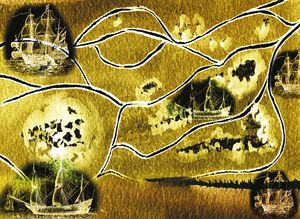Xi Jinping sold the belt-and-road dream to much of Asia, Africa and Europe invoking imageries of the ancient Silk Road. In his 2013 lecture at a Kazakh university, he recalled how the travels of the Han dynasty envoy Zhang Qian made 2,100 years ago had opened the Silk Road linking Asia and Europe. He told them how he “could almost hear the camel bells echoing in the mountains and see the wisp of smoke rising from the desert”.
Indeed, ‘silk road’ invokes images of wealth, trade, travel, adventure, exchange of knowledge, refinement, and more. Xi has been invoking all those. Yet, India withstood his silk spell, even as most of Asia fell for it.
Sadly for Xi, the spell of the silk seems to be wearing off for most of them. Many who attended his Xanadu durbar of 2017, and invested in Xi’s big yuan loan dreams, are beginning to see nightmares of wasteful spend, unliveable towers, rusting infrastructure, draining coffers and debt traps. They are seeming to hear not “camel bells echoing in the mountains” but the terrifying trots of Genghis Khan’s Mongolian warhorses.
In the 11th century, India alone had managed to ward off the golden horde, thanks to the deft diplomacy of India’s wise rulers then. So, too, in the 21st century. Thank Iltutmish, thank Narendra Modi.
Unlike what most ultra nationalists believe, pasts have not been all golden—neither China’s, nor India’s, Egypt’s, Greece’s, Rome’s, nor anyone else’s. On the contrary, most pasts have been leaden, ugly and bloody. Empires were not built with just silk and gold; they were built also with burning coal, smelting iron and flowing blood. Invoking pasts can backfire on the peace dividends from connectivity that we are seeking to reap now.
That was perhaps why Modi, Joe Biden and other leaders, who announced the India-Middle East-Europe corridor from the sidelines of last week’s G20 summit in Delhi, refrained from invoking memories of the coal-fired rail engines and coaches that criss-crossed the Middle East, Central Asia and north Africa till the end of the World War I. Built by the Ottoman Turks and their European rivals, they had linked three continents and three conflicting faiths.
Many are being rebuilt now. Only The Economist, known for its neo-liberal brashness, invoked the Ottoman past three years ago. In a picturesquely written Christmas special article in 2021, the magazine’s unknown writers built upon Agatha Christie’s Murder on the Orient Express to describe how rail lines that once criss-crossed the Middle East (Near East to the Europeans) and connected Europe with Asia and north Africa, are lying bombed-dead in the sands after two world wars and several dozen smaller wars. They are being rebuilt, the writers noted, by successor states that are realising the folly of wars over faith and territory.
The Hejaz railway, dynamited by the legendary Lawrence of Arabia and his Bedouin buddies to break the backbone of the Turkish empire in World War I, is now being rebuilt. Iraq is planning a line from Mosul to Turkey. The Saudis, on a rail-building spree, should soon link Jeddah with most of the emirates and Haifa in Israel where India is investing heavily. Soon a line shall branch off north towards Damascus and Istanbul, from where the Orient Express used to commence its journey. India hopes to ship goods to Dubai, Kuwait, Jeddah and Haifa and rail them across to Europe down the Orient Express route, or ship them further to Cairo, Alexandria and Tripoli.
Smooth as silk? Let’s keep our fingers crossed.
prasannan@theweek.in


